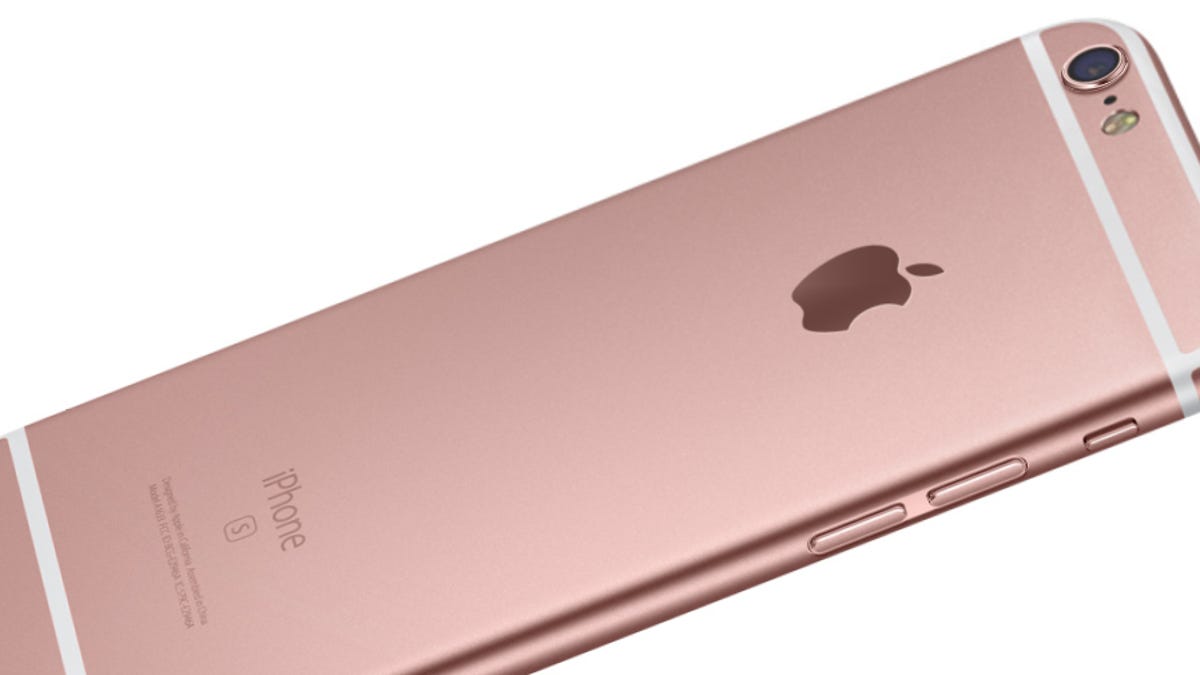How rose gold became the new black (for gadgets)
Rose gold is here for a reason. Now we know why.

Gadget designers must be tickled pink these days.
In a world that's long been largely black and white, a blushing hue known as rose gold has become the hot color. It's an option for Apple gadgets from iPhones to MacBooks to Beats headphones, as well as phones from a number of Android device makers.
Rose gold got off to a glowing start last September with the launch of the iPhone 6S line. CNET staffers around the world reported people queuing up specifically to get hold of the shimmery, sugary shade, and iPhone shoppers in China seemed swept up in a "preorder frenzy" for the rose gold tint. Apple doesn't release the breakdown of sales figures by color and did not respond to CNET's request for comment, but up to 40 percent of preorders during the iPhone 6S opening weekend were for rose gold models, according to an estimate by KGI Securities analyst Ming-Chi Kuo.
What the phenomenon of rose gold has yet to prove is whether it can endure.
"It's definitely a trend and not a classic look," said Maria Killam, an interior designer and color expert.
For now, though, it's seemingly everywhere. Since September's iPhone launch, rose gold has arrived on Sony's new Xperia X Performance, Huawei's Mate S and P9, and Samsung's latest flagships, the Galaxy S7 and S7 Edge, though Samsung tried to distinguish itself by calling the color "pink gold."
To Samsung, it's pink gold, not rose gold.
So is that copycatting or coincidence? Keep in mind that internal bureaucracy and sprawling global R&D efforts mean big companies aren't especially nimble. Decisions are labored over, leaving little wiggle room for spontaneity.
We got an inside look at that process last month when we paid a visit to the Sony Mobile headquarters in Tokyo and saw for ourselves some of the factors behind such color decisions.
Design pro Jeanna Kimbre laid out an array of 15 or so color samples that had all been considered for the Xperia X. It wasn't as simple as looking at a Dulux color chart; each color is printed on the material the phone will be crafted from to accurately represent the final product.
These are the final colors Sony settled upon for the Xperia X range.
The difference between the samples was discernible but dizzying. It's hard to explain why, when looking at two incrementally different shades of the same color, you might like one but not the other. The designer's job is to work out which shade will elicit a favorable response in a final product intended to appeal to consumers en masse.
From fashion to interiors to tech
Rose gold tech might seem like it came out of nowhere, but that's not really the case. Color trends don't begin with technology, even if that's where they end up.
Sienna Miller chose to wear rose gold to last week's Met Gala in New York.
"The general materials trend is going towards metal. Rose gold looks really high-class with that," said Kimbre, general manager of the Sony Creative Center, which brings together all the company's designers under one roof. Before that, she was the design lead on the Xperia X phone project.
At Sony, the design team has a strong brand heritage to take into consideration, but Kimbre also believes that designers should look beyond their own companies and industries for a sense of direction.
"What are the needs and wants you're going to be having in two years time?" she said.
Looking to trends outside the tech world is particularly important when it comes to color. Fashionable hues tend to be popular across industry lines. Rose gold isn't just the go-to color for tech designers right now. It also happens to be the hot thing in the world of hair styling, according to multiple celebrities, Cosmo and, of course, the arbiter of cutting-edge style: Instagram. The similar rose quartz is Pantone's "color of 2016."
One of the places Kimbre said she looks for inspiration is interior design magazines. No surprise then: Rose gold has been appearing in interior design, and before that in fashion, for several years now.
Rose gold was first popularized by jewelry designers like Cartier in the 1920s, at the beginning of the Art Deco period, according to Killam.
Softer than pink, edgier than blonde.
"We are seeing a lot of Deco influence in the current trends," she said. "Metals for interiors have been getting warmer recently, and now that gold is dominating the scene, rose gold has a strong place on the edge of the trend for those who love to push the limits."
The iPhone 6S wasn't Apple's first fling at rose gold. Some months earlier, the color first appeared -- and was largely out of reach for most consumers -- on the ultra expensive Apple Watch Edition, for which gold in general was the defining theme.
With phones running in the hundreds of dollars, versus the $10,000-plus for the Edition watch, rose gold has become a more affordable luxury. It's ideal for a "statement piece," said Killam. And with smartphones effectively the statement piece of the decade, there really is no other shade that can compare right now.
But as with many a fashion trend, it may not be the thing for long. If becoming passe is your worst nightmare, you might be safer going classic with your tech choices and investing in a more temporary rose gold fix instead -- a hair rinse, perhaps.

